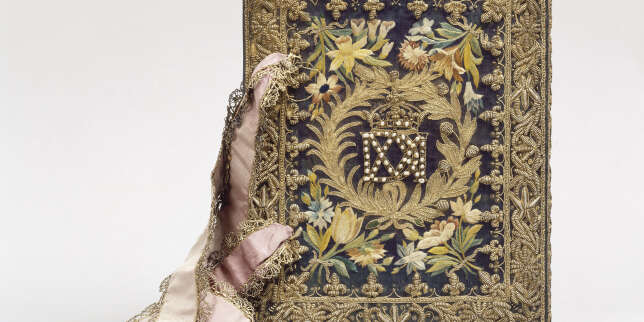Walking on the roof of hell
2016 - Installation (Installation)
30 pairs of Khadau wooden sandals (diameter 152.4 cm), 10 archival prints (each 21 × 29.7 cm), and 1 archival print (110 x 75 cm)
Birender Kumar Yadav
Birender Kumar Yadav comes from Dhanbad, India, a city built on its proximity of iron ore and coal and once forested and inhabited by Indigenous people who compose the Gondwana. The forests were felled and immigrants from northern Bihar and South India were brought to exploit the mineral resources. The Indigenous people were then dispersed to live nomadically, engaging themselves as seasonal workers in farms and industries. These itinerant workers frequently move from one work camp to another, and lack basic identity documents to prove their existence. They come from the fringes of the state and neighboring regions that were once covered in forests, which have since been denuded through mining over the last century.. Indian modernism is often linked to the construction industry as an engine that would lift the country from the repressive societal conditions of caste and poverty. But the very industry on which this political utopia is based is entrenched in exploitation. While studying fine arts in Benaras to become a blacksmith like his father in the Dhanbad coalfields, Yadav encountered people from his hometown, albeit trafficked to work in brick kilns, recognizing them from the creole language they used to communicate with immigrant families such as Yadav’s. Yadav then changed his focus from blacksmithing to documenting the activities of the brick kilns and labor trafficking. Yadav found that Indigenous tribes from Dhanbad were being exploited by gangs that would gather them in groups and make them work in kilns, where bricks were produced by burning charcoal. Walking on the roof of hell reflects on the conditions of these brick-kiln workers from the states of Uttar Pradesh and Bihar. They often work on bonded contracts in lethal work conditions, permanently burning the soles of their feet to manufacture bricks for the construction industry. The work comprises thirty pairs of wooden slippers called Khadau that the workers use while walking on top of the brick kilns, under which are extremely hot charcoal fires used to bake the bricks. Their feet, after years of enduring immeasurable heat, become senseless and hard like terracotta, mimicking sculptures of their sacrifice. Yadav’s project uncovers the popular culture and living stories of the migrants, as a form of personal history writing of the subaltern lives that are often forgotten in India’s decolonial presence.
Birender Kumar Yadav is a multi-disciplinary artist who experiments with various media including painting, sculpture, photography, installation, etching, found and man-made objects, as well as live documentary. Influenced by his early experiences as the son of a blacksmith working in a coal mine, Yadav’s work often draws attention to issues of class hierarchies. Using gunpowder extracted from matchsticks as his primary medium, Yadav explores the complexities of class and identity while performing a commentary on power structures extant in contemporary socio-political structures. Yadav’s work further reflects on the complexity of language, labor, and migration as conceptual constructs in the personal stories that he has inhabited and encountered.
Colors:
Related works sharing similar palette

© » LE MONDE
« L’Art du livre », de Michel Melot et Anne Zali : la splendeur à l’ouvrage Offrir Le Monde Article réservé aux abonnés Reliure originale en soie violette brodée d’or, fleurs et ornements en soie, chiffre de Marie de Médicis et couronne en perles fines, dos long à semé de fleurs de lis dans un encadrement, ruban de gros de Tours parme, avec lisière en dentelle dorée...

© » KADIST
Nikita Kadan
2018East of Ukraine became a place of armed conflict with Russia-backed separatists, who proclaimed parts of (the) Donetsk and Lughansk oblast (administrative region in Ukrainian) to be ‘People’s republics’...

© » KADIST
Alexis Smith
1995In 8 Ball Surfboard (1995),Alexis Smith combines her long-term interests in California culture and conceptual assemblage...

© » WHITEHOT
Ticket to Paradise: An Interview Whitney Oldenburg at Chart Gallery advertise donate post your art opening recent articles cities contact about article index podcast main December 2023 "The Best Art In The World" "The Best Art In The World" December 2023 Ticket to Paradise: An Interview Whitney Oldenburg at Chart Gallery By CLARE GEMIMA December 13, 2023 The intellectual landscape of sculptures and drawings in Whitney Oldenburg's latest exhibition, Ticket to Paradise (notably the work in the show entitled Feeding Frenzy), scrutinizes the intricate dynamics between protection and waste in the context of contemporary consumption...

© » KADIST
Felipe Arturo
2012Primero estaba el mar ( First Was the Sea , 2012) is a system of equivalences between syllables and silhouettes of waveforms cast in cement...

© » ART & OBJECT
Exploring the Meaning of the Archive for Marco Almaviva | Art & Object Skip to main content Subscribe to our free e-letter! Webform Your Email Address Role Art Collector/Enthusiast Artist Art World Professional Academic Country USA Afghanistan Albania Algeria American Samoa Andorra Angola Anguilla Antarctica Antigua & Barbuda Argentina Armenia Aruba Ascension Island Australia Austria Azerbaijan Bahamas Bahrain Bangladesh Barbados Belarus Belgium Belize Benin Bermuda Bhutan Bolivia Bosnia & Herzegovina Botswana Bouvet Island Brazil British Indian Ocean Territory British Virgin Islands Brunei Bulgaria Burkina Faso Burundi Cambodia Cameroon Canada Canary Islands Cape Verde Caribbean Netherlands Cayman Islands Central African Republic Ceuta & Melilla Chad Chile China Christmas Island Clipperton Island Cocos (Keeling) Islands Colombia Comoros Congo - Brazzaville Congo - Kinshasa Cook Islands Costa Rica Croatia Cuba Curaçao Cyprus Czechia Côte d’Ivoire Denmark Diego Garcia Djibouti Dominica Dominican Republic Ecuador Egypt El Salvador Equatorial Guinea Eritrea Estonia Eswatini Ethiopia Falkland Islands Faroe Islands Fiji Finland France French Guiana French Polynesia French Southern Territories Gabon Gambia Georgia Germany Ghana Gibraltar Greece Greenland Grenada Guadeloupe Guam Guatemala Guernsey Guinea Guinea-Bissau Guyana Haiti Heard & McDonald Islands Honduras Hong Kong SAR China Hungary Iceland India Indonesia Iran Iraq Ireland Isle of Man Israel Italy Jamaica Japan Jersey Jordan Kazakhstan Kenya Kiribati Kosovo Kuwait Kyrgyzstan Laos Latvia Lebanon Lesotho Liberia Libya Liechtenstein Lithuania Luxembourg Macao SAR China Madagascar Malawi Malaysia Maldives Mali Malta Marshall Islands Martinique Mauritania Mauritius Mayotte Mexico Micronesia Moldova Monaco Mongolia Montenegro Montserrat Morocco Mozambique Myanmar (Burma) Namibia Nauru Nepal Netherlands Netherlands Antilles New Caledonia New Zealand Nicaragua Niger Nigeria Niue Norfolk Island Northern Mariana Islands North Korea North Macedonia Norway Oman Outlying Oceania Pakistan Palau Palestinian Territories Panama Papua New Guinea Paraguay Peru Philippines Pitcairn Islands Poland Portugal Puerto Rico Qatar Romania Russia Rwanda Réunion Samoa San Marino Saudi Arabia Senegal Serbia Seychelles Sierra Leone Singapore Sint Maarten Slovakia Slovenia Solomon Islands Somalia South Africa South Georgia & South Sandwich Islands South Korea South Sudan Spain Sri Lanka St...

© » KADIST
Colter Jacobsen
2007Victory at Sea is a simple mechanism made from cardboard and found materials that mimics the Phenakistoscope, an early cinematic apparatus...

© » KADIST
Leung Chi Wo and Wong Sara
2010Office Lady with a Red Umbrella restages a figure from a 1980 postcard made from a photograph from 1950’s...

© » KADIST
Tom Nicholson
2012Tom Nicholson’s Comparative Monument (Palestine) engages a peculiar Australian monumental tradition: war monuments that bear the name “Palestine”...

© » KADIST
Sheroanawe Hakihiiwe
2019Perawesi / Estómago de animal / Stomach of animal by Sheroanawe Hakihiiwe exemplify his most abstract work, where he choses particular elements of a living organism to create his renditions...

© » DAZED DIGITAL
The 50 best K-pop tracks of 2023 | Dazed â¬…ï¸ Left Arrow *ï¸âƒ£ Asterisk â Star Option Sliders âœ‰ï¸ Mail Exit Music Dazed Review 2023 From Jung Kook to NewJeans and aespa, we look back on the K-pop tracks that ruled the last 12 months Text Taylor Glasby 15 December 2023 If the past few years have been focused on expanding K-pop (more global tours and festivals, more English releases), then 2023 was the expansion of the industry’s biggest companies’ interests beyond K-pop itself...








:quality(70)/cloudfront-eu-central-1.images.arcpublishing.com/thenational/3WYM5PKXHWASWGOE63KE5FXY5E.jpg)
